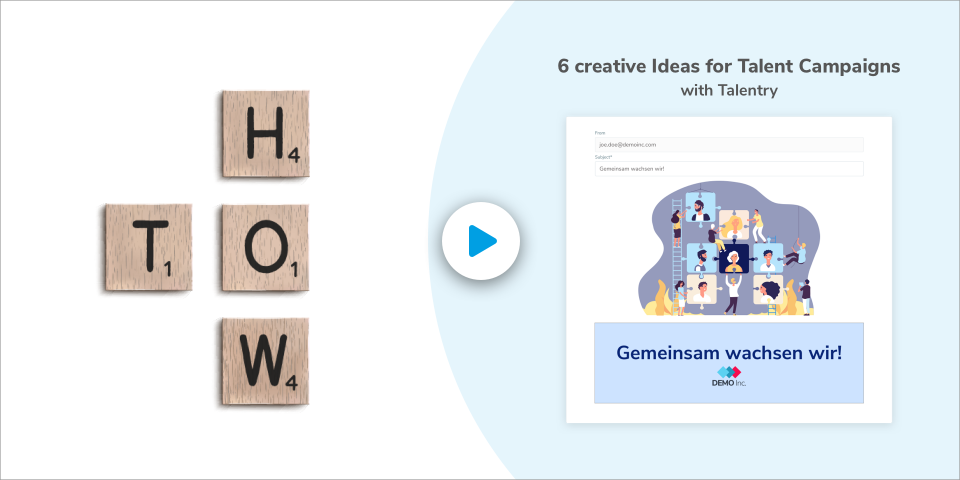Gamification: The easiest way to boost your employee referrals

Gamification applies playful elements in a non-playful context
Gamification can be used to enrich existing, monotonous referral processes with playful elements. Through shared fun, you can boost employee motivation and participation—and sustain them. Gamification, in fact, can make a significant contribution to your employee referral program. And the more employee referrals you generate, the more likely you are to achieve successful long-term hires.The success of any employee referral program depends crucially on employee participation. The chance to help shape team composition is a key driver. So is the monetary reward that a successful hire brings. Traditional referral programs typically reward successful hires. But that successful hire often takes time, if it happens at all. Hence the tendency for employees participating in a traditional referral program to become demotivated.
Gamification, by contrast, motivates people for the long term by enabling immediate feedback and constant goal setting—the key elements of long-term engagement, according to research.
It allows employees to earn points and redeem them for rewards by reaching different levels during the referral process, thus achieving personal goals even before a candidate is hired. The approach encourages employees to continuously share jobs in their social networks.
5 elements of a good gamification approach are particularly important to success:
1. Immediate feedback
Immediate feedback not only keeps employees informed about their progress and achievements in the “referral game”. It also gives them a direct sense of achievement and thus forms part of a so-called dopamine loop that motivates future actions. Digital technology even enables employees to track for themselves how many points they received for sharing job ads in social media, clicks on those ads, referrals, etc. – and how many points they still have to collect in order to achieve their personal goal.
2. Clear and simple rules
Your employees will be quickly discouraged if the rules of the game are too complex and opaque, so give them a clear, step-by-step guide. By clearly highlighting each step, you enable each employee to play the referral game successfully. Publish the defined general conditions (rewards and distribution of points) in a suitable framework to pre-empt possible queries.
3. Balanced goal setting
The right goal setting is crucial because it determines feelings of accomplishment and thus influences employees’ behaviors. Science shows that a sense of accomplishment is achieved by a combination of two perceptions: how attainable the goal is, and how challenging.
If the goal is unattainably high, motivation will be lost. But setting it too low will be equally discouraging. You need a goal that sets a challenge without discouraging those unlikely to make the higher end.
4. The right rewards
The selection of suitable rewards is not about the monetary value of the reward, but rather about the type of reward that aligns with both your corporate culture and your employees’ values.
If social responsibility is one of the top priorities in your company’s corporate culture, then donations to social institutions, for example, are the best choice.
Be creative and arouse the ambition of your employees. One quick way to identify the right rewards is to ask your employees what really motivates them. Vouchers—for travel, wellness, shopping, or restaurant visits—are usually popular. And if you have a hard-to-fill job, you can offer special incentives to anyone who finds a qualified candidate for that position.
“The deepest principle of human nature is a craving to be appreciated.” – William James
A playful referral program is also a great way to recognize your employees’ engagement. Science shows that recognition increases overall productivity, engagement, and morale because it reduces turnover. Rewards linked to recognition include extra vacation days, lunch with the managing director or CEO, approval for a team or company event, or professional training. If budget is an issue, a simple “thank you” card, flowers or publicly acknowledging employees who achieved their personal goals is an easy and affordable way to show recognition.
5. Avoid leaderboards
Leaderboards show players where they rank in a gamified system. But works councils might take a very critical view of this form of direct and public competition between employees. To avoid any information privacy issues, your employees should only see their personal score. That way, they can achieve their personal goal completely decoupled from the progress of other employees. The HR department is informed only when an employee redeems a reward, so they can initiate further steps.
Gamification energizes your referral program
Traditional employee referral programs tend to wither and die. Gamification elements can keep them alive. They help to motivate employees to share referrals in their network– and keep them motivated. Instead of a monetary reward that may never happen, the activities of the referrer are rewarded, detached from successful hiring. The goal is no longer in the distant future and the employee is sustainably motivated by short-term experiences of success.
Interested in learning more about gamification?
🎥 Watch our “How to” video!





.png)


